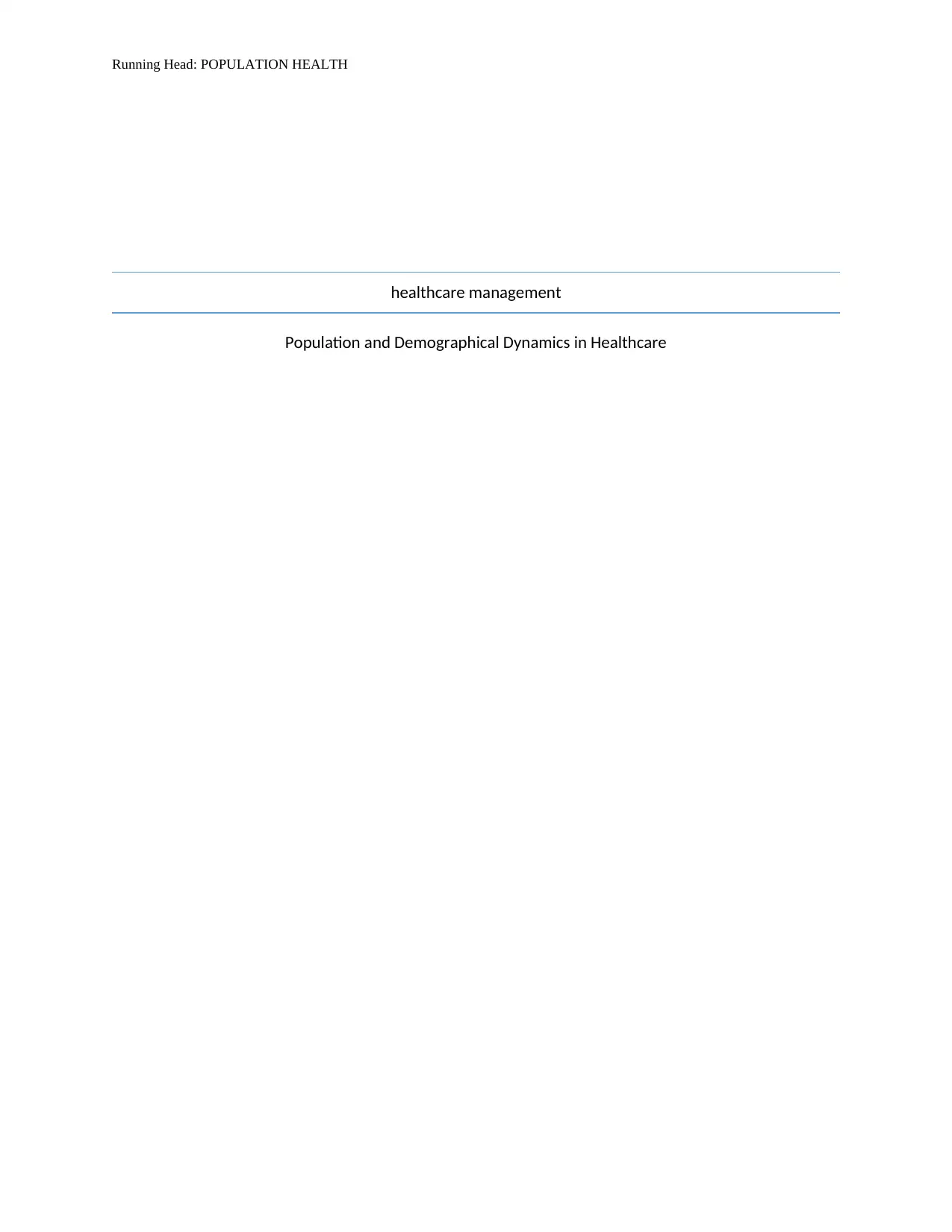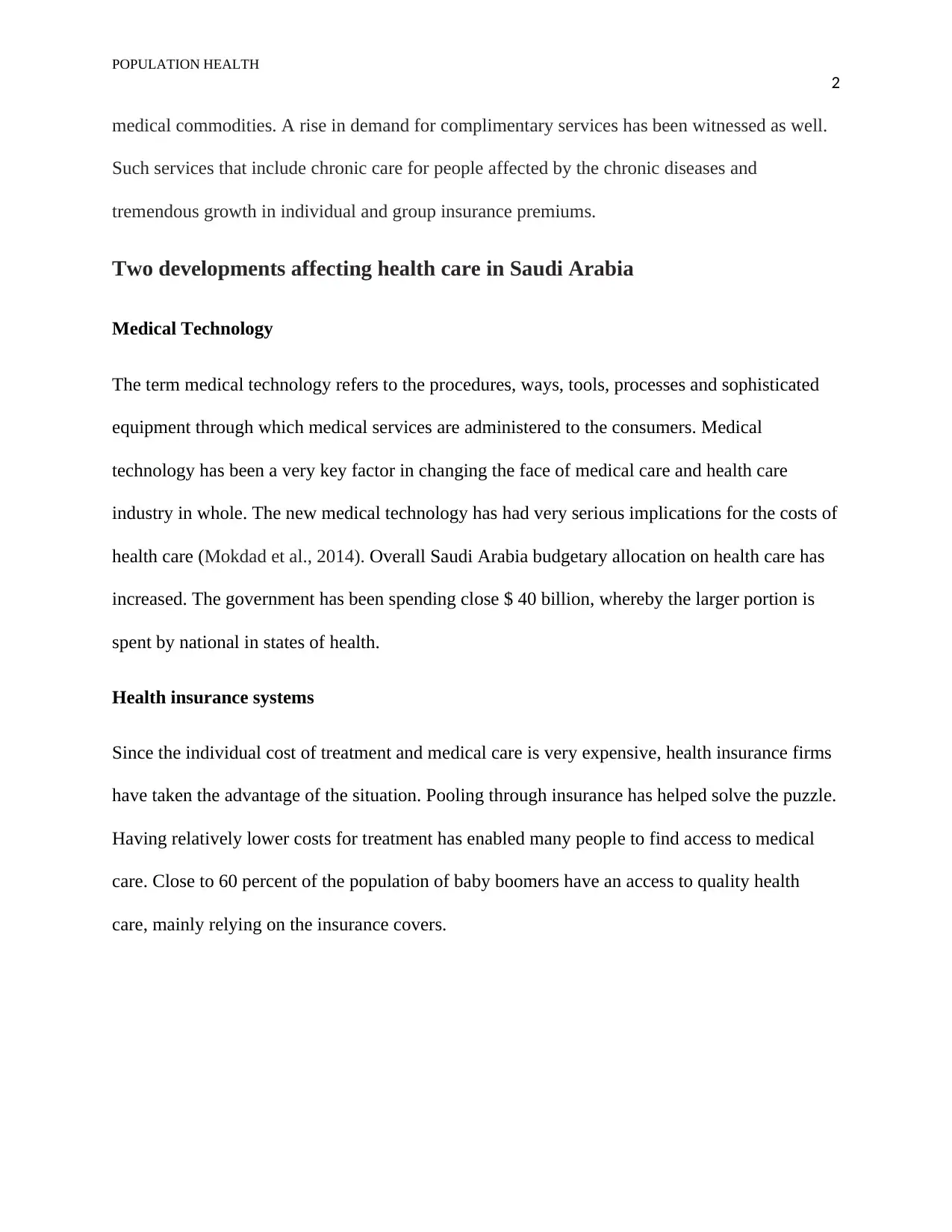Population Health Dynamics, Healthcare in Saudi Arabia: Analysis
VerifiedAdded on 2019/09/13
|5
|960
|157
Report
AI Summary
This report provides a comprehensive analysis of population health dynamics and their effects on healthcare delivery in Saudi Arabia. It begins by examining the significance of demographic changes and their impact on public utilities and healthcare costs. The report explores the shifting burden of diseases, including the decline of infectious diseases and the rise of chronic conditions, mental illnesses, and lifestyle-related issues. It discusses the implications of these changes, such as increased healthcare costs and the rise in demand for over-the-counter medical commodities and complementary services. The report then delves into two key developments influencing healthcare in Saudi Arabia: medical technology and health insurance systems, highlighting their effects on costs and access to care. Furthermore, it outlines healthcare determination methods for community needs, including integrated practice units, measurement of outcomes and costs for each patient, and the building of an enabling information technology platform. The report concludes by emphasizing the importance of these factors in shaping the future of healthcare in Saudi Arabia.
1 out of 5












![[object Object]](/_next/static/media/star-bottom.7253800d.svg)